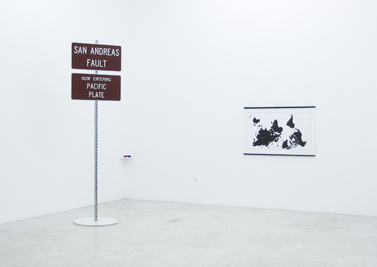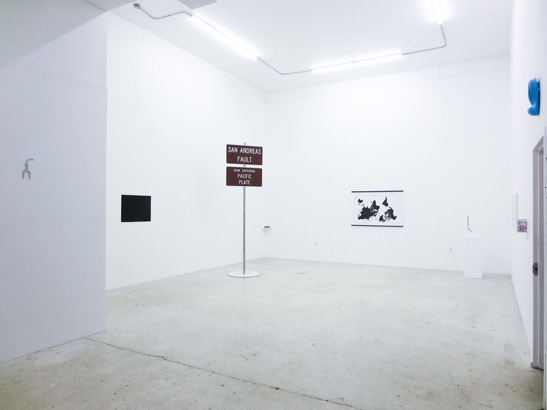
2
013 marked the 100-year anniversary of the readymade. The art world spent the year commemorating its legacy, that of Duchamp’s, and New York’s Armory Show, where the readymade made its debut in 1913. Though Duchamp himself couldn’t come up with a satisfactory explanation of the readymade, he provisionally defined it as “an ordinary object elevated to the dignity of a work of art by the mere choice of an artist.” Exhibitions, books, articles, magazine issues, public discussions, and lectures celebrate the readymade as a revolutionary way of thinking about, making, and experiencing art that continues to have currency and potential to this day.
Conceived years prior, Richard also made its public debut in 2013, not to pay tribute to the readymade as much as to put it to work and test out its power and promise anew. Amidst the consecration of what has really become a cliché, Richard opens up a necessary and timely space for the format.
Following Duchamp, Richard creates a schism between signature and signatory, scrubbing the entries of their authenticity by removing any and all details regarding contributing artist(s).
It would be easy to describe Richard as a curated art project but that would belie the spirit in which it was created and how it operates. The brainchild of curator Marco Antonini, Richard presents itself as a collectively authored online catalog of found objects, images, documents, and ideas. With little or no modification, these are designated as readymade, anonymous artworks and are “made available” for circulation, reproduction, and even ownership, as facilitated by Richard and its authors. Each entry, produced by artists (and eventually members of the public), is offered as an autonomous and independent work of art. And if you haven’t guessed it yet, Richard takes its name from the signature on Duchamp’s Fountain: R(ichard) Mutt. Following Duchamp, the project creates a schism between signature and signatory, scrubbing the entries of their authenticity by removing any and all details regarding contributing artist(s).
Whereas Duchamp signed his work with any number of aliases, he nonetheless saw the signature as crucial to the naming of the readymade. Richard, however, attempts to free the readymades from their authors, whose names are listed as free-floating signifiers elsewhere on the website, unintentionally inviting the audience to take part in a matching game. A keen and knowing eye might discern who contributed what, and solve the puzzle. Certain subject matter, objects, and visual cues may point to a particular artist’s work and sensibility. But what Richard encourages is a more playful, generative, and empowering approach to the readymade and art more broadly.
“The Conspiracy of the Authors” behind Richard, the project’s mission statement claims, is “to expand the perception and understanding of artistic practice, contributing to create new possibilities for unmediated artistic experience in everyday life.” A noble and promising goal if there ever was one. To achieve this, Richard has been structured and operates in three distinct, but integrated, phases: the online catalog, exhibitions, and a third open-ended phase in which anyone can do almost anything. In this final, but indefinite and continuously expanding, phase, the public is free to submit to the catalog and use, copy, and adapt its entries for shows and projects. Richard presents itself as an “alternative scenario for the creation, presentation, and dissemination of art”—one that, while still working within the framework of the contemporary art world, seeks to surpass it by turning it over to the public and to everyday life.

There are currently twenty-seven entries uploaded to the public catalog online. Entries consist of images, objects, videos, sounds, software, texts, etc., that are meant to be as widely and easily accessible as possible. A Lockheed Martin F-35 Lightning II Joint Strike Fighter aircraft, still in development (full-scale mock-ups, which allow viewers to sit in the aircraft cockpit, are available!), may be relatively hard to get one’s hands on. But then again, Duchamp nominated the Woolworth building as a readymade. Other entries are easier to reproduce and get ahold of, but in any case, Richard is offering to act as an intermediary and help track, transport, and adapt the entries for further use.
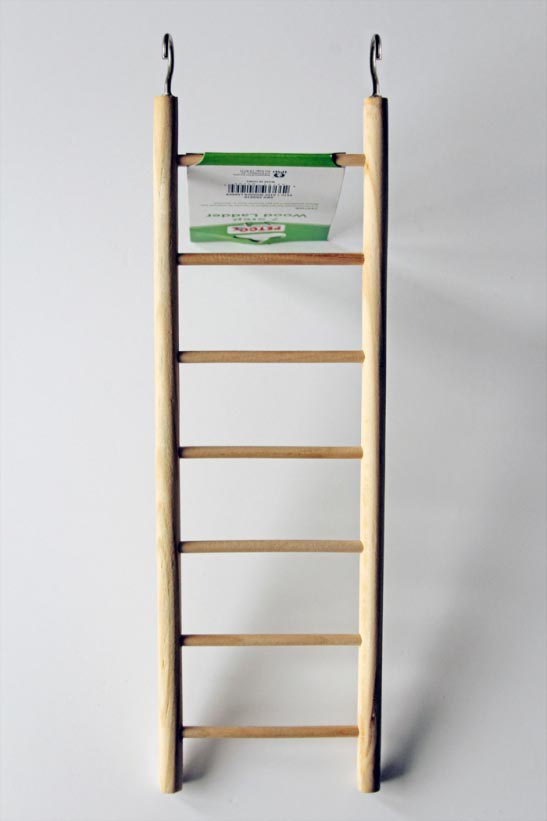
Stripped of their provenance, only the titles and descriptions of these items remain. One catalog entry’s title reads: RM008 _ 7 Step Wood Ladder for All Birds. The description that accompanies the first entry, Wovel, looks at the thought that went into the selection and suggests how anyone else might go about creating a readymade: “I came across this object online at some point, I don’t remember exactly how, but I thought it was special for the obvious reasons, it’s basically two Duchamps unknowingly melded into one functional consumer product…” Following Duchamp’s instructions—“Naturally inscribe that date, hour, minute on the readymade as information. Also the serial characteristic of the readymade”—Richard‘s entries are inscribed and serialized. Almost all of the entries provide instructions on how to secure, reproduce, or install the items, oftentimes including details on an object’s “duration” or loan specifications. The F-35’s duration is “the coming decades” and is available on “temporary loan.” While entry RM021_Discarded truism (left for all to see) is offered for sale, in its original form, for $26.67, it can also be borrowed temporarily.
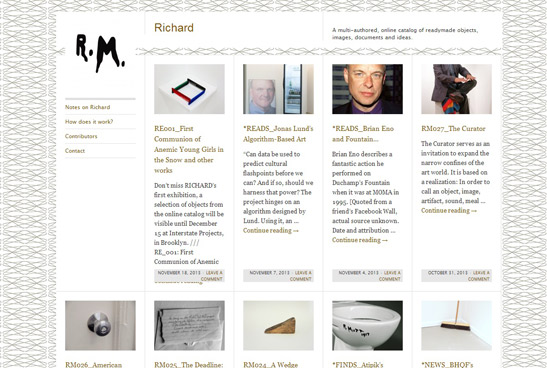
In undoing these previously distinct categories, the readymade signaled the emergence of artistic mass production alongside artistic mass consumption.
Richard is meant not only, like any catalog, to be browsed through with a passive desire for the displayed objects, but also as a constantly updated source of readymades that can be activated through exhibitions curated by invited guests, and eventually independent projects. This second phase was recently initiated at Interstate Gallery (November 8 through December 15, 2013) in an exhibition titled RE_001: First Communion of Anemic Young Girls In The Snow and other works. The exhibition’s name pays homage to Aphonse Allais’s 1883 drawing Première Communion de Jeunes Filles Chlorotiques par un Temps de Neige, which has been considered one of the first iterations of the readymade. Entries selected from the catalog are anonymously spread over two floors and outside the gallery. Objects seem forgotten in odd places and tight corners, but they have been carefully positioned to achieve an effect that lies somewhere between the white cube and the prosaic encounter of everyday things. They can be easy to miss, but when spotted, unexpectedly, can be revelations. And while they might easily be dismissed as not-art, they in fact enrich our reading and evaluation of the objects and gestures we have learned to regard as art.
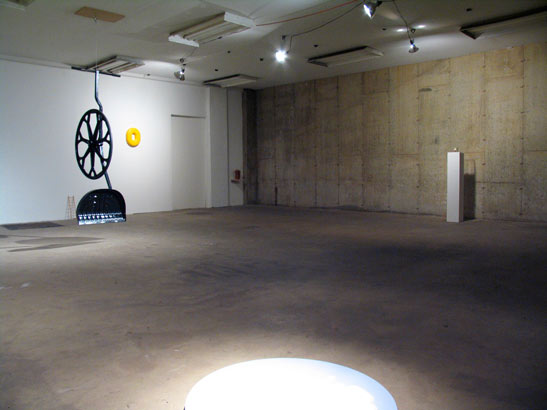
Duchamp’s contribution has altered not only how we engage with objects and visual culture, but also our relationship to them. The readymade has shown that the ways we understand, use, and appreciate art and the commoditized object are intricately linked. In undoing these previously distinct categories, the readymade signaled the emergence of artistic mass production alongside artistic mass consumption. The consumers of today’s visual materials are also its producers; now Internet-based practices are barely distinguishable from artistic practices. Richard courts this duplicity and expands on it by offering itself as something between art and not-art, between a closed system and an open source, between the Internet and IRL. What’s important for Richard is not whether the project or the “works” contained within it are considered “capital A” art or not. It aims to incite creative thinking and approaches to the works and to the promise of the readymade, but also hopes that this will impact how one perceives the visual world and reality.
